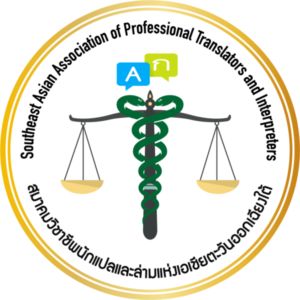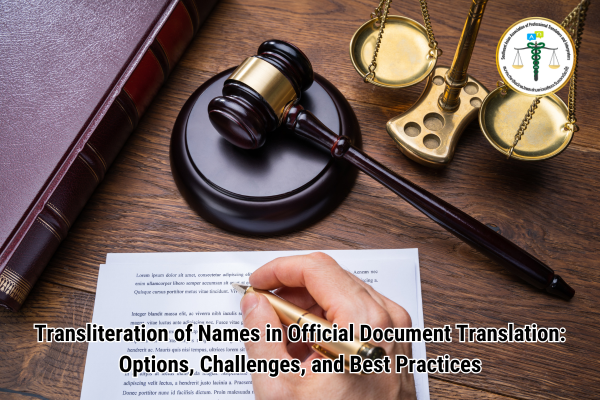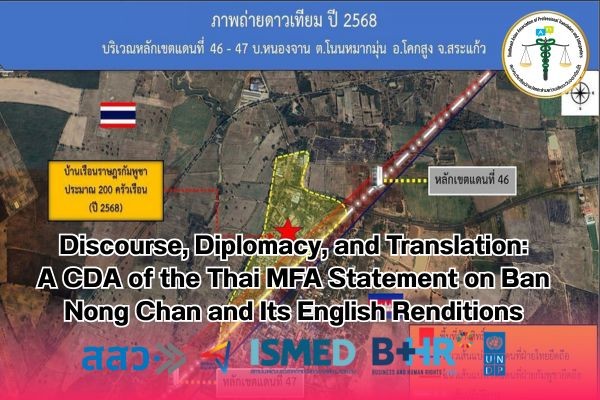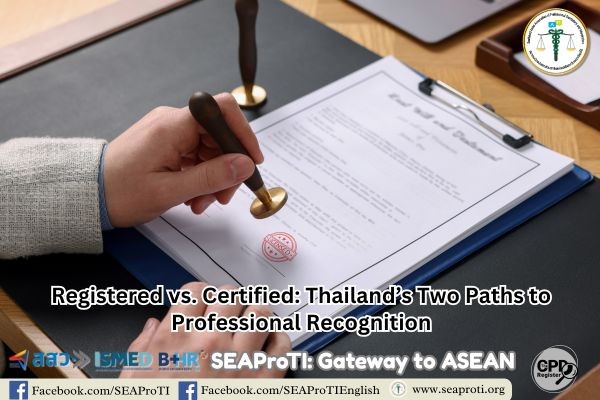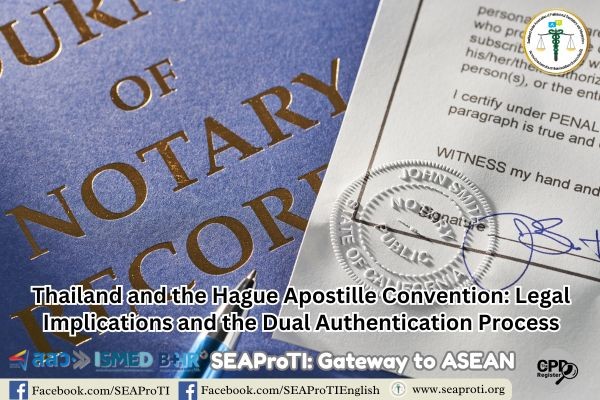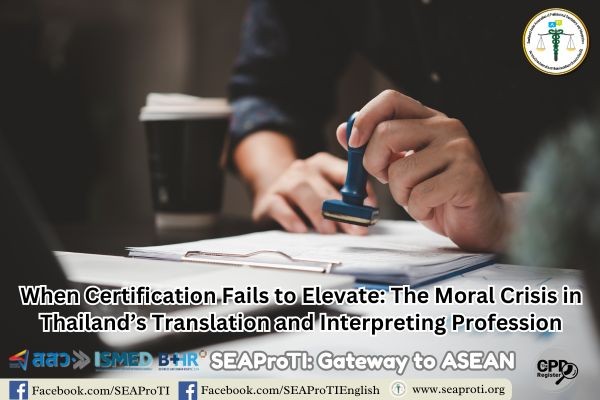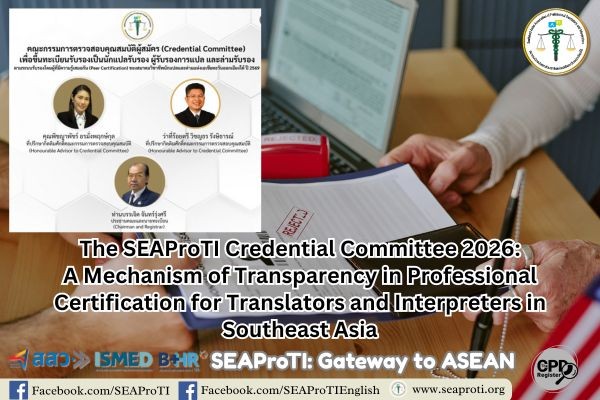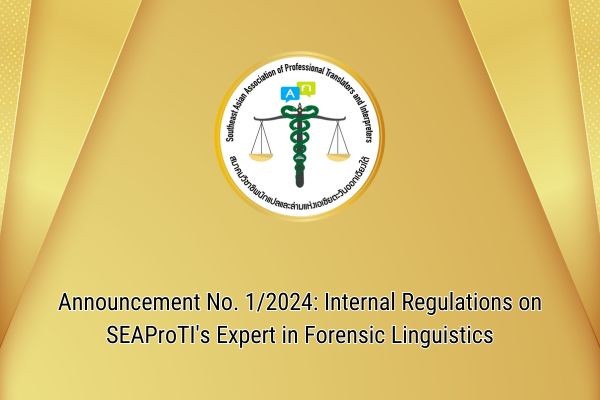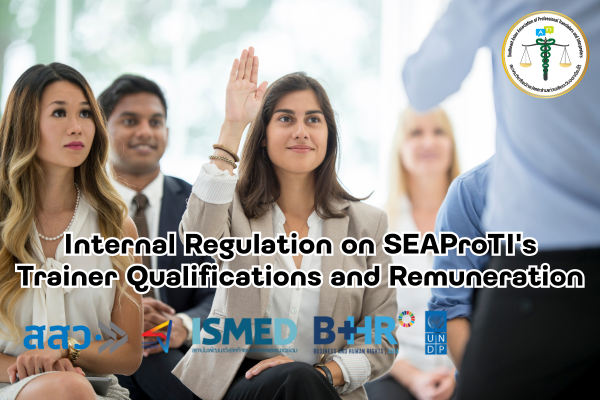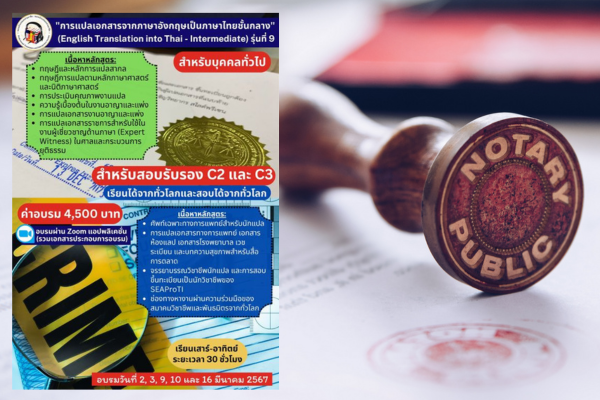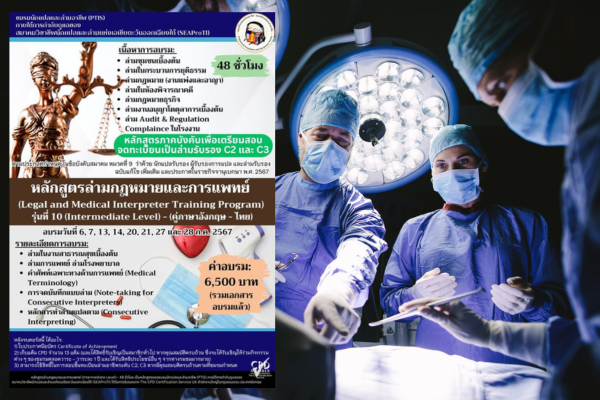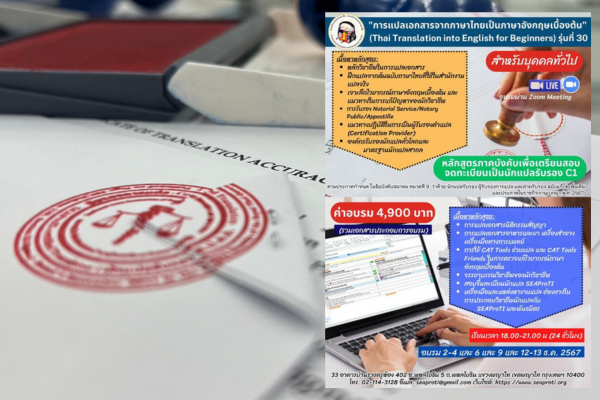Transliteration of Names in Official Document Translation:
Options, Challenges, and Best Practices
4 February 2025, Bangkok – Translating official documents such as birth certificates, passports, or asylum cards requires a high level of accuracy and consistency, particularly in the transliteration of names from one script to another. Inconsistencies in transliteration can lead to legal and bureaucratic complications, making it difficult for individuals to verify their identity.
In this article, we will explore the available options for translators and clients, the challenges involved in transliterating names and places of birth, and the best practices for handling incorrect transliterations in official document translations.
1. The Importance of Name Transliteration in Official Documents
Transliterating names from non-Latin scripts such as Arabic, Russian, or Chinese into the Latin alphabet is a complex process with significant consequences. A person’s name serves as their primary identifier across various legal and bureaucratic contexts, including passports, ID cards, residence permits, and academic certificates.
When transliterations are inconsistent or inaccurate, they can lead to:
- Difficulties in obtaining official documents
- Issues with employment applications and international travel
- Challenges in identity verification when names appear differently across documents
For refugees or immigrants seeking legal recognition in a new country, errors in name transliteration can have severe consequences on their legal status and daily life.
2. Options for Name Transliteration
When translating official documents, translators typically have three main options for handling name transliteration:
2.1 Using the Existing Transliteration
The simplest and safest approach is to use the name spelling as it appears in existing official documents such as asylum cards, passports, or government-issued certificates. The advantage of this approach is that it ensures consistency across different documents, reducing the risk of mismatches in identity verification.
However, the downside is that if the existing transliteration is incorrect or does not accurately reflect the person’s name, it can cause long-term problems.
2.2 Using a Correct and Standardized Transliteration
In some cases, translators may choose to use a correct and standardized transliteration rather than an incorrect version found in previous documents. This approach follows transliteration standards such as ISO 9 or BGN/PCGN, which provide systematic methods for converting non-Latin names into Latin scripts.
While this option ensures accuracy, it may create discrepancies between new translations and existing official records, potentially leading to issues with authorities that expect name consistency.
2.3 Allowing the Client to Choose Their Preferred Transliteration
In some countries, individuals may have the right to choose how their name is spelled in Latin characters, particularly when correcting previous transliteration errors. However, before opting for this approach, clients should verify with the relevant authorities whether they can officially adopt the revised spelling. In some cases, they may need to undergo a formal name correction process, such as through a deed poll (UK) or other legal procedures.
3. Challenges Arising from Incorrect Transliteration
3.1 Legal and Bureaucratic Issues
If a person’s name has been incorrectly transliterated in official records, they may encounter difficulties when applying for new documents, such as passports or residency permits.
3.2 Social and Personal Identity Challenges
An inaccurately spelled name can cause confusion and inconvenience in everyday situations, such as signing contracts, opening bank accounts, or applying for jobs.
3.3 Issues with Place of Birth Transliteration
Similar problems arise when a person’s place of birth is mistransliterated. In some cases, incorrect wording (e.g., using “villa” instead of “village”) may create confusion or make it appear as though the birthplace does not exist.
4. Best Practices for Translators
4.1 Consult the Client About Available Options
Inform clients about the risks and benefits of different transliteration approaches so they can make an informed decision about which spelling to use.
4.2 Use a Translator’s Note
If you choose to retain an incorrect transliteration from an existing document, include a translator’s note explaining that the name has been rendered as per the source document to ensure consistency with government records.
4.3 Verify Policies with Relevant Authorities
Before applying a different transliteration from an existing official document, advise the client to check with the relevant government agencies to confirm whether they can use an alternative spelling.
4.4 Ensure Consistency Across Documents
Regardless of the chosen transliteration method, it is essential to maintain consistency across all translated documents to prevent discrepancies that could complicate identity verification.
Conclusion
The transliteration of names and places of birth in official document translations requires careful consideration, as it directly impacts a person’s legal identity. Translators should discuss available options with clients, use translator’s notes to clarify discrepancies, and verify official policies before altering name spellings.
By applying best practices, translators can help clients navigate the complexities of name transliteration while ensuring that their documents remain legally valid and consistent across different records.
SEAProTI’s certified translators, translation certification providers, and certified interpreters:
The Southeast Asian Association of Professional Translators and Interpreters (SEAProTI) has officially announced the criteria and qualifications for individuals to register as “Certified Translators,” “Translation Certification Providers,” and “Certified Interpreters” under the association’s regulations. These guidelines are detailed in Sections 9 and 10 of the Royal Thai Government Gazette, issued by the Secretariat of the Cabinet under the Office of the Prime Minister of the Kingdom of Thailand, dated July 25, 2024, Volume 141, Part 66 Ng, Page 100.
To read the full publication, visit: the Royal Thai Government Gazette
การถอดเสียงชื่อในงานแปลเอกสารทางการ:
ทางเลือก ความท้าทาย และแนวทางปฏิบัติที่ดีที่สุด
4 กุมพาพันธ์ 2568ม กรุงเทพมหานคร – การแปลเอกสารทางการ เช่น สูติบัตร หนังสือเดินทาง หรือบัตรผู้ลี้ภัย เป็นงานที่ต้องคำนึงถึงความถูกต้องและสอดคล้องกันของข้อมูล โดยเฉพาะอย่างยิ่งในการถอดเสียง (transliteration) ของชื่อบุคคลจากอักษรหนึ่งไปสู่อีกอักษรหนึ่ง ซึ่งอาจทำให้เกิดปัญหาทั้งด้านกฎหมายและการยืนยันตัวตนหากมีความไม่สอดคล้องกัน ในบทความนี้ เราจะพิจารณาทางเลือกที่มีสำหรับนักแปลและลูกค้า ความท้าทายที่เกิดขึ้น และแนวทางปฏิบัติที่ดีที่สุดในการแปลชื่อและสถานที่เกิดที่มีการถอดเสียงผิดพลาด
1. ความสำคัญของการถอดเสียงชื่อในเอกสารทางการ
การถอดเสียงชื่อจากภาษาใด ๆ ที่ใช้ตัวอักษรที่แตกต่างกัน เช่น ภาษาอาหรับ รัสเซีย หรือจีน มาเป็นอักษรละติน เป็นกระบวนการที่ซับซ้อนและมีผลกระทบอย่างมากต่อบุคคลที่เกี่ยวข้อง เนื่องจากชื่อของบุคคลเป็นสิ่งที่ใช้ระบุตัวตนในทุกแง่มุมของชีวิต เช่น หนังสือเดินทาง บัตรประชาชน ทะเบียนบ้าน และใบรับรองต่าง ๆ หากชื่อถูกถอดเสียงผิดพลาดหรือไม่เป็นมาตรฐาน อาจก่อให้เกิดปัญหาด้านกฎหมายและระบบราชการ เช่น
- ความยุ่งยากในการขอเอกสารราชการ
- ปัญหาในการสมัครงานหรือการเดินทาง
- ความยากลำบากในการพิสูจน์ตัวตนเมื่อชื่อไม่ตรงกันในเอกสารต่าง ๆ
สำหรับผู้ลี้ภัยหรือผู้อพยพที่ต้องการได้รับเอกสารใหม่ในประเทศปลายทาง การถอดเสียงที่ผิดพลาดอาจส่งผลเสียร้ายแรงต่อชีวิตของพวกเขา
2. ทางเลือกในการถอดเสียงชื่อบุคคล
ในการแปลเอกสารทางการ นักแปลมักมีทางเลือกหลัก ๆ อยู่สามแนวทาง:
2.1 การใช้การถอดเสียงที่มีอยู่แล้ว
ทางเลือกที่ง่ายและปลอดภัยที่สุดคือการใช้การถอดเสียงของชื่อที่ปรากฏอยู่ในเอกสารทางการที่มีอยู่แล้ว เช่น บัตรผู้ลี้ภัย หนังสือเดินทาง หรือเอกสารราชการอื่น ๆ ที่ออกโดยหน่วยงานของรัฐ วิธีนี้มีข้อดีคือช่วยให้เอกสารต่าง ๆ สอดคล้องกันและหลีกเลี่ยงปัญหากับหน่วยงานที่ต้องใช้เอกสารเหล่านี้ร่วมกัน อย่างไรก็ตาม ข้อเสียคือ หากการถอดเสียงนั้นผิดพลาดหรือไม่สอดคล้องกับการออกเสียงจริงของชื่อ การใช้ต่อไปอาจทำให้เกิดปัญหาทางกฎหมายในอนาคต
2.2 การเลือกใช้การถอดเสียงที่ถูกต้องและเป็นมาตรฐาน
ในบางกรณี นักแปลอาจเลือกใช้การถอดเสียงที่ถูกต้องและเป็นมาตรฐาน แม้ว่าจะไม่ตรงกับชื่อที่ปรากฏอยู่ในเอกสารเก่า ตัวอย่างเช่น หากชื่อในบัตรผู้ลี้ภัยสะกดผิด นักแปลอาจเลือกใช้การสะกดที่เป็นที่ยอมรับในทางวิชาการหรือเป็นมาตรฐานสากล (เช่น ระบบ ISO หรือ BGN/PCGN) อย่างไรก็ตาม วิธีนี้อาจก่อให้เกิดปัญหากับหน่วยงานที่ต้องการให้เอกสารทั้งหมดมีชื่อสะกดตรงกัน
2.3 การให้ลูกค้าเลือกการสะกดที่พวกเขาต้องการ
ในบางประเทศ ลูกค้าอาจมีสิทธิ์เลือกวิธีการสะกดชื่อของตนเอง โดยเฉพาะในกรณีที่ต้องการปรับปรุงการสะกดชื่อให้สอดคล้องกับการออกเสียงที่แท้จริง อย่างไรก็ตาม ก่อนใช้วิธีนี้ ควรตรวจสอบกับหน่วยงานที่เกี่ยวข้องว่าการเปลี่ยนแปลงนี้สามารถทำได้หรือไม่ และลูกค้าอาจต้องดำเนินการทางกฎหมายเพื่อให้ได้รับการยอมรับ
3. ปัญหาที่เกิดจากการถอดเสียงผิดพลาด
3.1 ปัญหาด้านกฎหมายและระบบราชการ
หากชื่อบุคคลถูกถอดเสียงผิดและใช้ในเอกสารทางการ อาจทำให้เกิดปัญหาในภายหลังเมื่อต้องใช้เอกสารอื่น ๆ ที่มีการสะกดที่แตกต่างกัน เช่น เมื่อยื่นขอหนังสือเดินทางหรือทำธุรกรรมทางการเงิน
3.2 ปัญหาทางสังคมและอัตลักษณ์บุคคล
ชื่อที่ถูกสะกดผิดอาจสร้างความยุ่งยากให้กับเจ้าของชื่อในการแนะนำตัวหรือทำธุรกรรมในชีวิตประจำวัน เช่น เมื่อพบปัญหาว่าชื่อไม่ตรงกับบัตรประชาชนหรือหนังสือเดินทาง
3.3 ปัญหาด้านสถานที่เกิด
ปัญหานี้คล้ายกับปัญหาการสะกดชื่อบุคคล เมื่อตำแหน่งที่เกิดของบุคคลถูกถอดเสียงผิด อาจทำให้เกิดความสับสนและส่งผลต่อการตรวจสอบข้อมูล ในบางกรณี คำศัพท์ที่ใช้ผิดพลาด (เช่น “villa” แทน “village”) อาจทำให้สถานที่เกิดของบุคคลนั้นดูเหมือนเป็นสถานที่ที่ไม่มีอยู่จริง
4. แนวทางปฏิบัติที่ดีที่สุดสำหรับนักแปล
4.1 ปรึกษาลูกค้าเกี่ยวกับตัวเลือกที่มี
แจ้งให้ลูกค้าทราบถึงความเสี่ยงและข้อดีข้อเสียของแต่ละทางเลือก เพื่อให้พวกเขาสามารถตัดสินใจได้ว่าควรใช้การสะกดชื่อแบบใด
4.2 ใช้หมายเหตุของนักแปล (Translator’s Note)
หากต้องใช้การสะกดชื่อที่อาจทำให้เกิดความเข้าใจผิด ควรเพิ่มหมายเหตุอธิบายว่าการถอดเสียงนี้มาจากแหล่งใด และหากมีข้อผิดพลาด ควรระบุว่ามีการใช้ตามเอกสารต้นฉบับเพื่อให้สอดคล้องกับระบบราชการ
4.3 ตรวจสอบกับหน่วยงานที่เกี่ยวข้อง
ก่อนที่จะใช้การถอดเสียงที่แตกต่างจากเอกสารที่มีอยู่ ควรแนะนำให้ลูกค้าตรวจสอบกับหน่วยงานรัฐหรือองค์กรที่เกี่ยวข้องเพื่อให้มั่นใจว่าสามารถใช้การสะกดชื่อแบบใหม่ได้
4.4 ให้ความสำคัญกับความสม่ำเสมอของข้อมูล
ไม่ว่าการถอดเสียงจะใช้ระบบใด สิ่งสำคัญคือต้องรักษาความสอดคล้องกันของชื่อในเอกสารทุกฉบับเพื่อหลีกเลี่ยงปัญหาในการตรวจสอบข้อมูลในอนาคต
สรุปส่งท้าย
การถอดเสียงชื่อและสถานที่เกิดในงานแปลเอกสารทางการเป็นเรื่องที่ต้องใช้ความระมัดระวังและการพิจารณาอย่างรอบคอบ เนื่องจากส่งผลกระทบต่อความถูกต้องของเอกสารและตัวบุคคล นักแปลควรปรึกษาลูกค้าเกี่ยวกับตัวเลือกที่เป็นไปได้และใช้หมายเหตุของนักแปลเพื่ออธิบายความแตกต่างของการสะกดชื่อ นอกจากนี้ ควรตรวจสอบกับหน่วยงานที่เกี่ยวข้องก่อนที่จะใช้การสะกดชื่อที่แตกต่างจากเอกสารทางการเดิม เพื่อป้องกันปัญหาด้านกฎหมายและการยืนยันตัวตนในอนาคต
เกี่ยวกับนักแปลรับรอง ผู้รับรองการแปล และล่ามรับรองของสมาคมวิชาชีพนักแปลและล่ามแห่งเอเชียตะวันออกเฉียงใต้
สมาคมวิชาชีพนักแปลและล่ามแห่งเอเชียตะวันออกเฉียงใต้ (SEAProTI) ได้ประกาศหลักเกณฑ์และคุณสมบัติผู้ที่ขึ้นทะเบียนเป็น “นักแปลรับรอง (Certified Translators) และผู้รับรองการแปล (Translation Certification Providers) และล่ามรับรอง (Certified Interpreters)” ของสมาคม หมวดที่ 9 และหมวดที่ 10 ในราชกิจจานุเบกษา ของสำนักเลขาธิการคณะรัฐมนตรี ในสำนักนายกรัฐมนตรี แห่งราชอาณาจักรไทย ลงวันที่ 25 ก.ค. 2567 เล่มที่ 141 ตอนที่ 66 ง หน้า 100 อ่านฉบับเต็มได้ที่: นักแปลรับรอง ผู้รับรองการแปล และล่ามรับรอง

